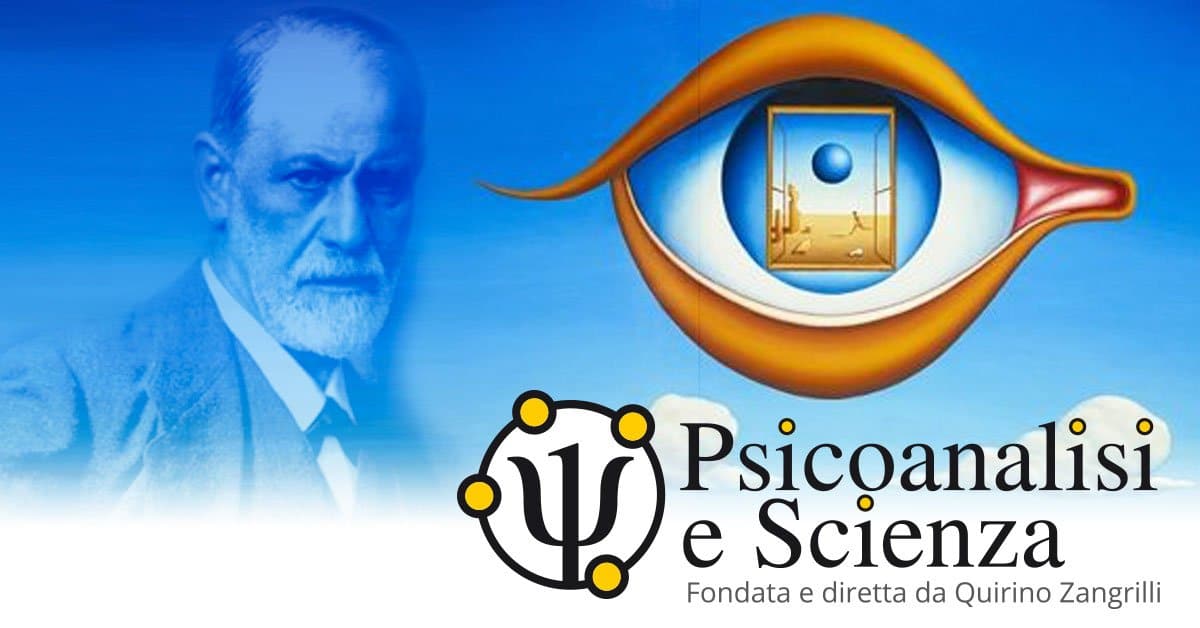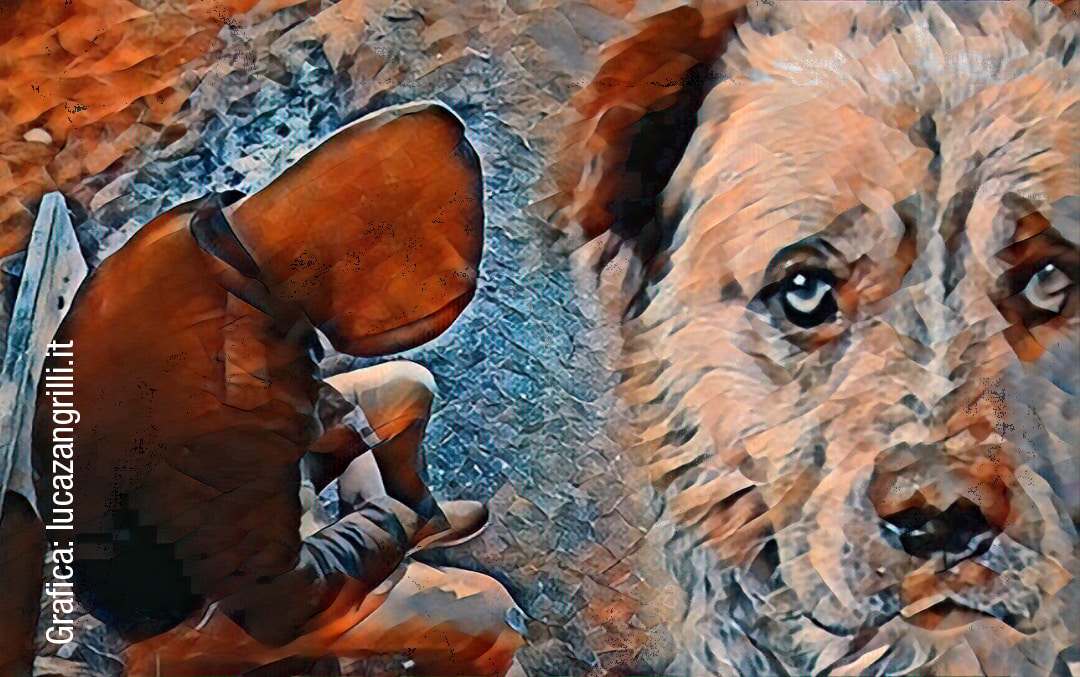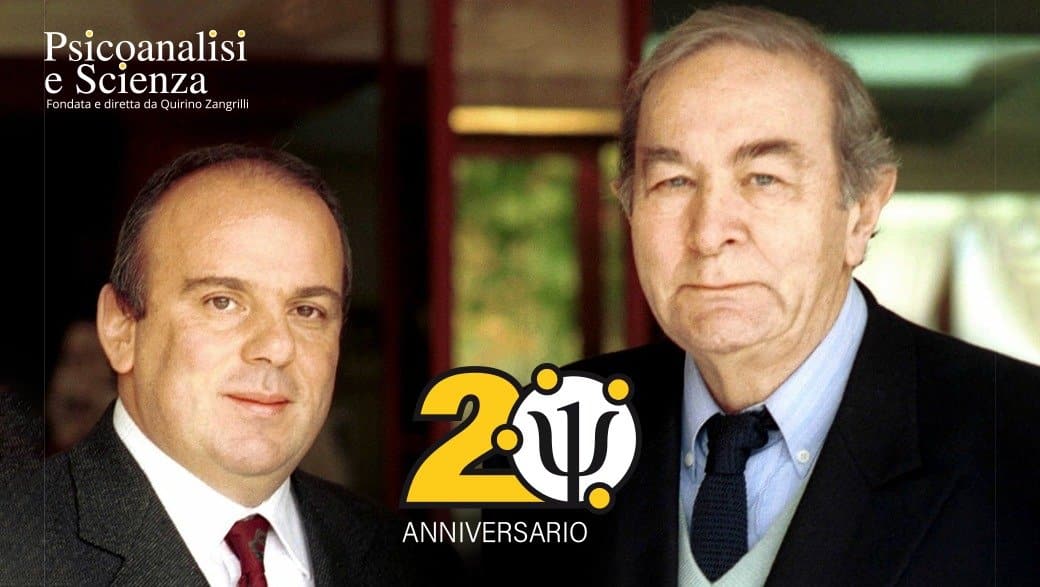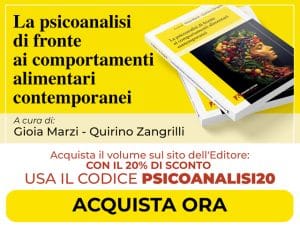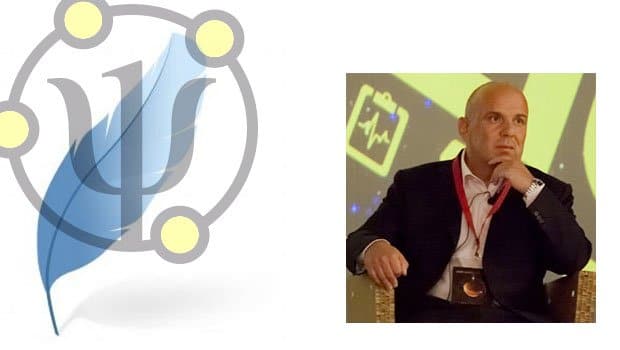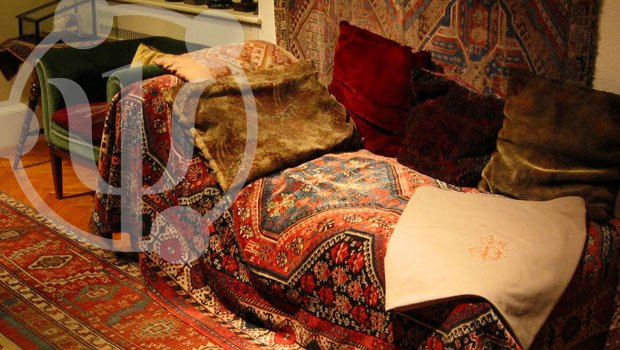Cemetery and Burial Rituals As a Means For The Grief Elaboration
The present work was part of an official report in the session “The Vicissitudes” for the Congress “LE PERIFERIE DELLA MEMORIA – Rappresentazioni Vissuti Trasformazioni della morte urbana” held in Turin from the 19th to 21st March 1992.
One of the reasons which makes the grief elaboration particularly difficult lies in the fact that the dead relative, as image that acts in the psychism of the survivors, continues to exist, at least for as long as the energetic coordination of those formal elements which give meaning to the representational-affective set to which that precise historical entity corresponded, can be conserved.
It is sufficient to think of the difficulty that we have in representing a world in which the dead person is no longer present: for months, sometimes years, we perceive his physiognomy amongst the crowd or we propose, maybe during the first confused moments that follow each morning’s awakening, to phone him in order to share a certain emotion with him.
In the expression “work of mourning” introduced by Freud in the far 1915 in “Mourning And Melancholia” is included the notion of energetic process of transformation which is strictly connected to the psychic elaboration that indicates the work accomplished by the mind in order to dominate the energetic surplus deriving from the traumatic event through the establishing of operations of connection and binding.
The mourning experience is obviously an experience of loss: in our existence there are certain objects upon which we have made libido investments.
Suddenly, someone comes to tell us that we have lost all the patrimony that we have invested that ‘stock share’ in! We feel destroyed and amputated: a severe energetic robbery has been made to our detriment. No one ever willingly accepts a loss and usually resorts to the reality rejection; it is the very reality-testing which tells us that that object no longer exists and that therefore, the invested libido has to be removed from the object in question. A painful and demanding work which people tend to put off or avoid by having all the more closer relations with the internal image of the lost object.
For micropsychoanalysis, it is important to consider that the construction of the individual psychic world does not happen by introjection (fragments of the external reality are psychically introduced from the external world internally to constitute the ontogenetic psychic world) but rather by projection (the objects traceable in the ontogenetic scenery are those that supply the perceptive support for the binding and the dynamism of the images, which constitute the genealogical makeup of each individual).
Personally, I believe that as well as the pain constituted by the libido ‘robbery’ much of the sufferance which follows the mournful event comes right from a brusque movement towards the primary process and the approach to the Void: the Images are themselves already an attempt of binding-organisation of the psycho-material energy and the constitution of the Imago (intended as structured in complexes, in other words, in unconscious autonomous nuclei of the key characters of infancy) is an ulterior operation of binding which moves away from the energetic destructuring of the very Void.
The bodies-support to which we relate are an ulterior protective barrier which allow us to move away the spectre of the energetic vacuity.
People are depositors of a specific iconic make-up which acts as a magnet and as an anchor for specific portions of our psychism; the greater the iconic affinity is, which exists between two subjects, the greater the possibility will be that stable energetic bonds will be established.
This issue implicates the fact that the people who we choose to be surrounded by concur to stabilise our form and that much of the sufferance felt in the mourning experience derives from the brusque energetic reshuffle, which the forms that interacted with the lost person, undergo (the sufferance always derives from an abrupt tensional unbalance: a voice which is off-pitch annoys us because it places us too rapidly into another range of acoustic frequency which is too far from the precedent one).
Abandoning the bonds with the image of the lost object is painful mainly because it makes a certain energetic quantum lose its form: during the mourning not only the work of the internalization of the defunct’s image happens in the Ego but it is the entire internal world which must be reconstructed according to an original form. Paradoxically this remodelling of the form can often permit the person the actualisation of attempts, already present in his hereditary make-up of images, that in the previous co-ordination did not have the possibility of activating themselves.
It is a phenomenon which can be compared to the isomer in chemistry, a very frequent phenomenon above all in the organic compounds for which two or more substances having the same percentage of chemical composition differ only for the different distribution of the atoms in the molecule. The molecular formula is always the same, it is the spatial configuration that changes; nevertheless, this simple formal difference can determine appreciable variations of the physical or chemical proprieties, in other words of the behaviour of the compound. Sometimes, however, the pain which derives from the necessity of the total reassembling of one’s own interior world, pushes people to refusing the reality, which according to the individual’s background can lead to the psychotic denial or to the massive use of mechanisms of identification with the dead person.
The present considerations and the importance of the Death rituals will become evident following some clinical cases taken from my case records.
In the first case which I would like to illustrate, a young patient was afflicted by a serious form of Spitz anaclitic depression, provoked by the precocious death of his mother and partially protected by a psychotic position of denial of the loss: the patient was, according to himself, persecuted by the presence, in disguise, of his mother’s ghost.
In particular, the majority of his sufferance was bound to a lacerating relationship of love, highly idealised but not reciprocal, which the young man had with a young woman who seemed to him to be the reincarnation of his mother.
Through a long period of analysis the patient had succeeded in becoming aware of the loss of his mother, obtaining the unbinding from the persecutory image of his mother, elaborating the mourning and establishing a satisfying relationship with a young woman on a sexual-affective level.
In order to deal with this case it was necessary, as often happens in micropsychoanalysis, to visit the places in which the young man had grown up, places which also included the cemetery in which the patient’s mother was buried.
During this micropsychoanalytic technical support the analyst respects criteria of great prudence and remains of the maximum neutrality. He limits himself to listening to the account and the reminiscences of the patient. During a long walk through the streets of his town of origin and around the surrounding countryside the patient spoke repeatedly about the irrepressible burst of tears which he had during his infancy whilst in front of the television when the Dutch football team lost against the German one.
It was a screen-memory, a situation of displacement-binding of a situation of an irreparable loss, the breaking of the narcissistic shell and of the infantile omnipotence.
The visit to the place where his mother’s body was buried also had in this case the function of a powerful associative inductor which triggered a profound process of psychic elaboration. A few days after the visit to the cemetery the patient had the following dream:
I was at the window of our house in … (the name of the place of birth) and my father was there. Me and another person had to jump from the window but it was very very high. The threatening Void was below us. We were carrying some things on our shoulders and I said: “But we need a parachute!” And my father said: “Jump, don’t worry, you can do it!” In any case I jumped and we both plummeted and whilst I precipitated I thought: “But I don’t have a parachute!”
We’re going to crash against a plank of wood… We crashed upon this coffin (LAPSUS: coffin instead of thing – in Italian the words are similar, cassa – cosa) which cushioned the blow. Then the dream’s atmosphere changes and there is a girl with her legs open wide as if she were waiting for someone to penetrate her”.
Here are some of the associations produced: “If I hadn’t landed on that plank I would be dead! And instead I was alive, inside a hole. I had fallen into the coffin but there was no one in it. I thought of you Doctor, that you had thrown me to make me understand: “Go, can you see that there is nothing in there? There is no life” And in the real life it’s me, me that lives after this fall; my mother is no longer, but I live, live… not to return to the coffin, I must live because life is that girl who awaits me with her legs open wide. I want to throw myself but I want the maximum safety: a parachute. From the window you either fly or you die. Now I’ve clearly seen my mother inside a coffin from behind the window. And she has disappeared from my life. That was the last time that I saw her but I thought she was sleeping! Mummy you’re sleeping, aren’t you? Wake up! She wasn’t sleeping… I would never have been able to wake her. She was on the bed like my granddad had been and they had taken them to the same place. She used to kiss me, she used to warm me, she was my love. How can she have become so cold? But that’s the way it is! (he punches the wall adjacent to the couch violently) She was cold. From the window, in any case, one goes away, disappears, doesn’t return, and I want to go too. I wanted to go to her: this symbolic trip doesn’t frighten me because it leads to a place where she ended up. In the end I am the only one alive and there’s nothing in the coffin. I opened this damned coffin and inside it there was nothing. The parachute is my mother.”
I believe that, regardless of all the considerations that can be made about the over-determination of the oneiric material, the manifest content of this dream is almost transparent: there is a movement, which is perceived as dangerous but ineluctable, that we could define a ‘jump into the Void’ and a defensive structure which in the manifest content of the dream is initially represented by a plank of wood, but which the relative lapsus leads to the facet of the analytic phase once again: the coffin.
The latter saves the protagonist from this threatening approach to the void but, in addition to a protective function, has persecutory characteristics that are source of notable sufferance.
In particular, the funerary topos acts as body-support to which the mortiferous image of the defunct mother can be bound, and allows the start of an enucleation process of the image of himself from the maternal-foetal synapsis to which the patient was fixed.
This dynamic of the actualisation of the psychism will allow him to subtract himself from the sucking whirlpool of the compulsion to repeat. “The coffin – the patient concludes – has saved my life: my mother is neither inside or outside it, there is only me. That coffin represents the end of my mother and the beginning of myself! I no longer need the parachute: I can live without it”.
With the exposition of the second clinical case I would now like to speak about the possible massive use of the mechanisms of identification with the defunct, a normal occurrence during the first months that follow the mournful event, but which if protracted and repeated, can lead to a pathological elaboration of the grief.
We can verify this in the case of a young woman who we will call The Lady of Darkness being as her aspect and her manners resemble a creature of the night. She systematically wears black, with an imaginative look but which seems to have come from another era; anyone would notice a certain self-satisfaction in presenting herself with this dark look. I, who observe her under a professional aspect, can only consider it as a counterphobic behaviour, adopted to exorcise the powerful unconscious appeal exercised by the death pole of the life-death drive.
The woman comes to my clinical observation in a severe condition: a protracted anorexic syndrome has reduced her in a pre-cachectic state. The Lady of Darkness had lost her father after a long and painful illness, fifteen years before. Everything about her made one think that that loss had not been minimally elaborated: the lady even ignored the precise place where her father had been buried since, with efficient mechanisms of rationalisation she had always refused to go to the cemetery.
At the loss of her father she had stopped studying and had taken her father’s place in his company. But let’s closely follow (through the patient’s efficacious words) the session in which the insight of the unconscious processes of identification with the defunct happens and, at a distance of fifteen years, the process of the elaboration of grief begins.
This session had been preceded by clinical material in which the Lady of Darkness in several moments and with different formulations had expressed a painful unease of not having her own place, a collocation which gave her serenity.
I’m destroyed…reduced to pieces because I have always kept everything under control, I have never allowed myself to suffer or cry. I had always told my dad – I’ll never do the job you do! – and instead… after all, where could I go? Once, my father was sent to work at a base where the previous manager had committed suicide. My father used the same chair, he sat at the same desk, how could he? The one before him was dead and he was sitting in his place! He was in a dead man’s place! Oh my God! But I’m in a dead man’s place too! (this modality of moving closer to the truth, of the projective type, is very frequent above all in people with a compulsive structure) I do the same things he did but what happened to him can’t happen to me! I’m frightened of dying, above all in that way. I’m frightened now. I am another person, I’m not him! And what if the same things happen to me? Every day I do the same things he used to do, it’s a terrible routine. I speak about the same things he used to speak about. But I’m not him! I’m not him, I’m not dead. Is that why I’m always at the doctor’s? Because I’m afraid of being ill like him? It’s cold… it’s as if I have become him! (in effect the patient finds herself in a situation of great danger: one of the possible complications of a process of pathological grief elaboration is represented by the possibility that the subject, by placing the internal conflict on to the somatic compartment, proceeds in reconstructing the organic or psychic symptoms presented by the defunct: on one side an attempt to eternise the image through the formal attributes upon which the ambivalence and the affect were mainly concentrated and on the other side an attempt to annul, with a retroactive movement, the trauma by re-living it on her own skin)
Sometimes I say the things he would have said, I reason like him, I do all the things that, before, bothered me to see in him. I feel trapped. I can’t believe that the same things have to happen to me! Now everything is really hurting me. For fifteen years I have been pretending to be myself but it is fourteen years that I have been in a dead man’s place. And I was becoming him! Actually, I had already become him! I had taken his place. I had a dead man’s place: it is as if I should die from one moment to the next. Is it for this reason that I always have the sensation that something horrible must happen to me from one moment to the another? It is like already having your destiny determined; no, this can’t happen to me! (the patient expresses these concepts abreacting an enormous affect, cries, arches her back, becomes agitated. The key-concept is reiterated, enriched and examined in depth, until progressively the anguish diminishes and the tension placates).
It has been incredible: like a flash, as if something has exploded in my head … a violent insight. I have been living somebody else’s life to make everyone happy. My mother sees my father in me and anyhow I had accepted that role. That’s why I have never been able to go to the cemetery… but I’m not dead and I don’t want to die… I must find myself again. I wish I were at home now, suddenly I feel so calm, as I have never been before, I wish I were at home to find the place that was mine and not another one. So, now I believe I can tranquilly visit my father”.
I would like to add that the difficulty of finding her own place was also amplified by the impossibility of having a place on which to bind the image of her dead father, together with the concomitant refusal to participate in the ritual of the burial of the corpse.
The funeral rituals have the function of officially sealing (Ego-society) the psychic topos which acts as a perceptive support of binding the image of the defunct, until the libido ties with it are loosened and untied.
E’ autore di 74 tra libri e pubblicazioni scientifiche. Ha partecipato in qualità di relatore o di presidente di sessione a numerosi Convegni scientifici nazionali ed internazionali.
Il suo libro “La vita: involucro vuoto”, pubblicato da Borla nel 1993, è in adozione dal 1994 presso la Cattedra di Psicologia Dinamica dell’Università di Torino.
Nel 1994 gli viene assegnato il “Premio Nazionale Ciociaria per la Medicina”.
E’ l’ideatore e fondatore della rivista multimediale “Psicoanalisi e Scienza”, la più seguita rivista di psicoanalisi on line al mondo in lingua italiana (Fonte: Entireweb, Alexa, Google, Virgilio, Arianna., etc.). Nel 2012 partecipa come Relatore alla Rassegna Scientifica di BergamoScienza.
Nel 2013 espone i suoi studi sull’nterazione materno-fetale nella Sessione Speciale dell’ XI Congresso Mondiale di Medicina Perinatale a Mosca con la relazione “Intrauterine Imprinting”.
Nel 2024 riceve il Premio Accademico d’Onore della Accademia Culturale Internazionale Cartagine 2.0.
Nel 2024 docente ad Almaty – Kazakhstan presso il workshop di psicoanalisi sul tema della violenza, promosso dall’Università di psicoanalisi di Mosca in collaborazione con l’Istituto svizzero di micropsicoanalisi.
Nel 2025 pubblica come curatore il libro “LA PSICOANALISI DI FRONTE AI COMPORTAMENTI ALIMENTARI CONTEMPORANEI” presso Armando Editore
Nel 2025 pubblica il libro “PSICOANALISI DEL TRAPIANTO D’ORGANO – IL VISSUTO DELL’ALIENO” presso Armando Editore
Doctor Quirino Zangrilli was born in Fiuggi in 1955. Graduated with honours in Medicine and Surgery in 1980, he practices Psychoanalysis, with intensive method, since 1982.
He is author of 74 scientific pubblications. He has attended as speaker or president of session to many national and international scientific Conventions.
His book “La vita:involucro vuoto” (Life: empty involucre), published by Borla in 1993, has been in use by the Chair of Dynamic Psychology at Turin’s University since 1994.
He is the author and founder of the multimedia review “Psicoanalisi e Scienza” (Psychoanalysis and Science), the most read Italian on line review of psychoanalysis.
In 2012 he participated as a Speaker at the Scientific Festival of BergamoScienza.
In 2013 he illustrated his research on the maternal-fetal interaction in the Special Session of the XI World Congress of Perinatal Medicine in Moscow with his relation “Intrauterine Imprinting”.
He is visiting teacher at Moscow Institute of psychoanalysis and training psychoanalist of Swiss Institute of Micropsychoanalysis.
In 2024 he is a teacher in Almaty – Kazakhstan at the psychoanalysis workshop on the topic of violence, promoted by the Moscow University of Psychoanalysis in collaboration with the Swiss Institute of Micropsychoanalysis.
In 2024 he received the Honorary Academic Award of the Carthage 2.0 International Cultural Academy
In 2025 he published as an editor the book “PSYCHOANALYSIS IN THE FACE OF CONTEMPORARY EATING BEHAVIOURS” at Armando Editore
In 2025 he published the book “PSYCHOANALYSIS OF ORGAN TRANSPLANTATION – THE EXPERIENCE OF THE ALIEN” at Armando Editore
Le Le Docteur Quirino Zangrilli est né à Fiuggi en 1955. Diplômé avec mention en Médecine et Chirurgie en 1980, il pratique la psychanalyse depuis 1982, en utilisant une technique intensive.
Il est l’auteur de 74 livres et publications scientifiques.
Il a participé en tant que conférencier ou président de session à de nombreuses conférences scientifiques nationales et internationales.
Son livre “La vie : enveloppe vide”, publié par Borla en 1993, est adopté depuis 1994 par la Chaire de Psychologie Dynamique de l’Université de Turin. En 1994, il a reçu le “Prix national Ciociaria de médecine”.
Il a conçu et fondé le magazine multimédia “Psicoanalisi e Scienza”, qui est le magazine de psychanalyse en ligne en italien le plus suivi au monde. (Source : Entireweb, Alexa, Google, Virgilio, Arianna., etc.).
En 2012, il a participé en tant que conférencier à la colloque scientifique de BergamoScienza.
En 2013, il a exposé ses études sur l’interaction materno-fœtale lors de la session spéciale du XIe Congrès mondial de médecine périnatale à Moscou avec le rapport “Intrauterine Imprinting”. Il est chargé d’enseignement au cours de spécialisation de trois ans en psychanalyse, psychothérapie psychanalytique et consultation psychanalytique à l’Université de Moscou.
Il est membre didacticien de l’Institut Suisse de Micropsychanalyse et de la Commission pour la Pratique de celui-ci.
En 2024, il enseigne à Almaty – Kazakhstan à l’atelier de psychanalyse sur le thème de la violence, promu par l’Université de Psychanalyse de Moscou en collaboration avec l’Institut Suisse de Micropsychanalyse.
En 2024, il reçoit le Prix Académique Honoraire de l’Académie Culturelle Internationale Carthage 2.0.
En 2025, il publie en tant qu’éditeur le livre « LA PSYCHANALYSE FACE AUX COMPORTEMENTS ALIMENTAIRES CONTEMPORAINS » chez Armando Editore
En 2025, il publie le livre « PSYCHANALYSE DE LA TRANSPLANTATION D’ORGANES – L’EXPÉRIENCE DE L’ÉTRANGER » avec Armando Editore
В 2024 году является преподавателем в Алматы – Казахстан на семинаре по психоанализу на тему насилия, проводимом Московским университетом психоанализа в сотрудничестве со Швейцарским институтом микропсихоанализа.
В 2024 был награжден Почетной академической премией Академии Международной Культуры «Карфаген 2.0».
В 2025 году он опубликовал в качестве редактора книгу «ПСИХОАНАЛИЗ В РАМКАХ СОВРЕМЕННОГО ПИЩЕВОГО ПОВЕДЕНИЯ» в издательстве Armando Editore
В 2025 году он опубликовал книгу «ПСИХОАНАЛИЗ ТРАНСПЛАНТАЦИИ ОРГАНОВ – ОПЫТ ЧУЖОГО» совместно с Армандо Эдиторе

